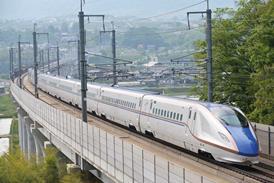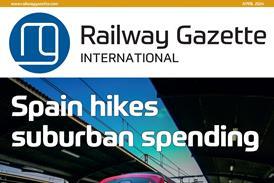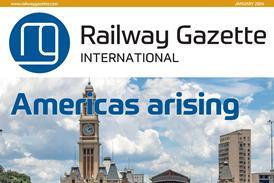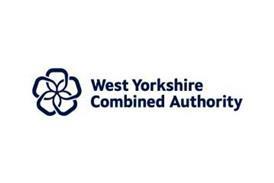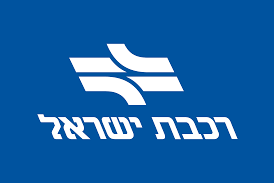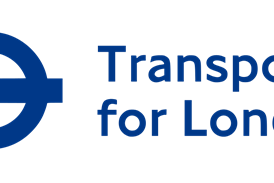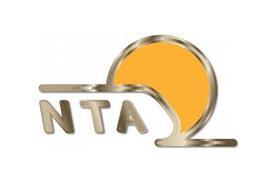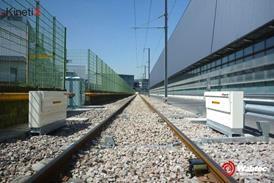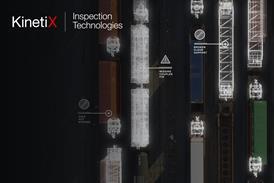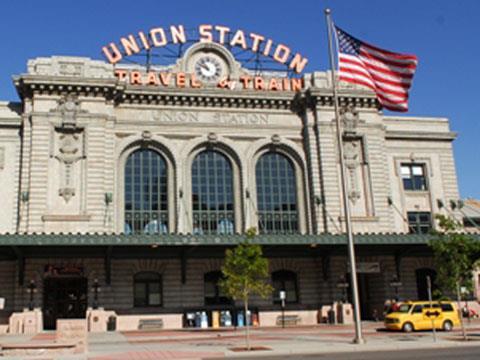
A LONG LINE of smart new light rail vehicles stands in the sunshine outside the Elati maintenance depot on Denver's Southwest Line. Distinguished from the existing cars operated by the Regional Transportation District by a blue waist stripe and plug doors, they are being readied for the opening of two more lines this year.
The Transportation Expansion Project (T-REX) will add 30·7 km in the Southeast Corridor, almost doubling the city's light rail network. But this is only the precursor to the ambitious $4·7bn FasTracks programme which will add a further 191 km of light rail and commuter rail routes over the next decade. These will act as the backbone for urban development around the Colorado state capital, which is one of the fastest-growing regions in the USA.
Multi-modal project
Launched in May 2001, T-REX is a $1·67bn multi-modal package, which combines the expansion of the I-25 and I-225 interstate highways with the construction of light rail lines in the same corridors. The rail element accounts for $879m, or $28·5m per km.
Diverging from the existing network at I-25 & Broadway, the line runs along the west side of the widened I-25 for 24·2 km as far as Lincoln Avenue in Douglas County, with a 6·5 km branch in the central reservation of the orbital I-225 to Parker Road in Aurora. Both lines are grade-separated throughout, and they will serve 13 stations in total.
Civil engineering on the light rail lines formed part of the integrated project. Colorado Department of Transportation awarded a design & build contract to the Southeast Corridor Constructors joint venture of Kiewit Construction and Parsons Transportation Group.
Funding for T-REX is coming from separate CDoT and RTD bond issues approved in 1999. RTD is also getting $525m from the FTA for the light rail works under a full funding grant agreement announced in November 2000.
The tensioned-catenary overhead line equipment was subcontracted to Mass Electric, with the substations coming from Impulse of North Carolina. General Electric has been responsible for the signalling & communications. Rails for the project were rolled by local supplier CF&I at Pueblo, using recycled steel recovered during the demolition of the city's Mile High Stadium.
T-REX nears completion
The first section of line between Broadway and University was completed at the end of 2004, to allow integrated systems testing and commissioning of the LRVs which began arriving the following month. The completion of tracklaying was marked by a ceremony on November 10 2005, at which RTD General Manager Cal Marsella proudly announced that the line would open for revenue service on November 16 2006, a month ahead of the original schedule.
T-REX Deputy Project Director Rick Clarke attributes the early completion to a good working relationship between RTD and CDoT throughout the construction programme. Good co-ordination of road closures was particularly important, he says, as I-25 is the most congested road in the Denver area, and it was essential to keep three lanes open for traffic in each direction at all times.
CDoT took direct responsibility for remodelling the I-25/I-225 junction, which required the construction of six bridges and a tunnel to thread the light rail line and its three flying junctions through the heart of the reconstructed road interchange. At the same time, work was undertaken to improve drainage along both road corridors.
Clarke says there has been extensive local input into the location and design of the stations. Colorado is expected to be the busiest, and here the line briefly diverges from I-25 to follow the old Colorado & Southern Railroad alignment. Lowered into a cutting to avoid road crossings, Colorado has 110m platforms to take four-car trains; the other stations have three-car platforms, but like those on the existing routes they will be lengthened under FasTracks.
The Parker Road terminus lies alongside the existing Nine Mile park-and-ride facility, where 1200 spaces are currently served by a bus shuttle. Clarke comments that considerable residential development is underway in the surrounding area, driven by the advent of the light rail line.
Similar Transit-Oriented Development schemes are underway around Louisiana-Pearl station, where a 'neighbourhood plaza' is taking shape on a raft above the station. More TOD is planned for the site of the Belleview golf course, and here the developer has offered to finance park-and-ride facilities at the station.
TOD is progressing at Lincoln Avenue, where a developer building a 2000-space multi-storey car park near the station has allocated 300 spaces for light rail users. At several locations, community and business interests have come together to provide extra funding for footbridges over the interstate highway, which will help to tie the communities together as well as improve access to the stations.
When T-REX opens, RTD plans to add four routes to its present two. Route D runs from Littleton & Mineral on the Southwest Line through the city centre to 30th & Downing. Route C from Littleton to Union Station shares the same tracks to 10th & Osage, before diverging onto the Central Platte Valley Spur completed in 2002.
The principal services on the Southeast Corridor will be Route F from Lincoln Avenue and Route H from Nine Mile to Denver - both will run at 15min intervals, but neither can run to 30th & Downing because of capacity restrictions on the single line sections north of the city centre. There will also be a half-hourly Route G from Lincoln Avenue to Nine Mile using the south-to-east curve, plus a half-hourly Route E from Lincoln Avenue to Union Station.
New cars, new depot
To operate these routes, RTD ordered 34 SD160 LRVs from Siemens at a cost of $2·4m each. These are similar to the existing fleet of SD100s, which has grown to 49 vehicles, but have AC traction motors, swing-plug doors and improved passenger information displays.
The last of these cars will arrive this summer, but RTD has already decided to exercise an option for 34 more vehicles to follow from January 2007. This will save $17m compared to the prices being quoted for a separate order. Half of the extra cars are intended to meet projected ridership growth, and the remainder will be ready for the first phase of FasTracks.
With the fleet outgrowing the original depot at Mariposa, RTD began work in July 2002 on a larger facility, which opened in January 2005. Although essential to T-REX, the Elati depot was procured under a separate contract.
Built on the 8·8ha site of a steel foundry in Englewood, the main building has 10 inspection, two lifting and three flat bays, together with washing and sanding facilities. Outside stabling can accommodate 100 cars, and space has been left for four extra tracks.
Mariposa is being retained as a heavy overhaul workshop - the oldest cars will soon fall due for a mid-life overhaul. Siemens is also using it for retrofitting work on the older vehicles to make them compatible with the new cars, such as upgrading the passenger information system and destination displays. Up to four cars are being tackled at a time, with new cars substituting on Routes C and D which need between 45 and 47 cars in traffic each day.
Voters endorse FasTracks
The next light rail project will be the West Corridor, linking central Denver with Edgewater, Lakewood and Golden. Final design began in mid-2005, and an initial $35m tranche of federal funding has been included in FTA's Fiscal 2007 budget (RG 3.05 p118).
The West Corridor is the first element of FasTracks, which was approved 58:42 by voters in a November 2004 referendum, despite opposition from the state Governor and CDoT (RG 12.04 p815). Marsella puts the success down to careful planning, with a strong emphasis on local involvement, plus a realisation that future urban growth would be stifled without good transport investment.
'We have recognised that in major developed countries, long-range mobility needs are best served by rail investment', he explains. FasTracks will have a 'profound impact on land-use issues, and is 100% consistent with the regional government's 30-year plan.'
Marsella is heartened by the result, which he describes as 'a vote for development and growth in a smart way', even though Colorado is notoriously tax-averse. 'Getting public buy-in before the ballot was a very nice evolution', he feels. 'The biggest challenge was drafting the plan, picking the corridors, and getting local involvement.' RTD undertook major investment studies in every corridor, and 'let the public decide the local plan all the way. We used the transit planning process, went through all the alternatives, and the product of the process went into the plan.'
The result was 'a coalition of support - every chamber of commerce, all newspapers bar one, and 31 [out of 38] metro area mayors. There was very strong business support, because good transport links means lots of travel to downtown, for employment, sport, and leisure.' All opinion formers, community groups and business leaders were fully conversant with the details, and 'there were no surprises' - although the final routes and station sites are subject to ratification as part of the Environmental Impact Statement process.
Marsella believes FasTracks 'will have a profound impact on the way Denver will develop. All the cities are revising their plans and zoning to take advantage of the investment. We all aspire to smart growth.' He explains that 'with smart growth, goals are achieved because it makes sense. You can legislate and restructure, but if it's not right or logical the market can get around it. What we are doing is working with the market to everyone's benefit in the longer term.'
He points to T-REX, where 'developments are coming naturally - even before the line is open, we are starting to see infill development taking place around the stations.' There has also been a huge revival at Englewood on the Southwest Line, with the shopping mall revitalised, and large-scale TOD encompassing both office and residential property now in the planning phase.
A fast build-out
Given the strong backing for FasTracks, Marsella says RTD is under pressure 'to accelerate timescales everywhere'. He is in discussion with local politicians and the RTD board about priorities. 'The increased sales taxes began in January 2005, giving us a 12-year build-out; now it's down to 10 years and eight months'.
RTD is certainly moving fast. Within the first few months it had leased 3600m2 of office space for the project team and hired four major consultancies to progress aspects of the programme. By mid-2005 the authority was in active negotiations with Union Pacific and BNSF over right-of-way acquisition, although the railways are reluctant to share tracks with the passenger services.
Marsella makes no apology that rail construction will account for the lion's share of the investment, thanks in no small part to the benefits and long-term confidence inspired by its fixed guideway. 'Rail investment will best serve our mobility goals. Buses fill up in the suburban area and don't have the capacity to provide local service on the line haul into the city. It's much better to use your buses to raise the frequency of feeder services in the suburbs, and eliminate the unproductive part of the haul.'
However, it is difficult to serve sprawling suburbs using buses, even with an intensive feeder service. Denver currently boasts an average of 2·2 to 2·3 cars per household, but Marsella says growing road congestion on the main corridors means that 'automobiles aren't going anywhere'. So, if you can't beat them, join them. 'What people want today is park-and-ride', he explains.
RTD has several major park-and-ride sites, served by the existing light rail routes or bus shuttles to and from the city centre. Most are already operating at capacity - Marsella says it is 'our most popular mobility product', adding that 'rail is more popular than bus'. In conjunction with the regional and city governments, RTD is now drawing up a long-term parking management plan.
Under FasTracks, RTD plans to provide a total of 22 105 new park-and-ride spaces across the nine lines. In addition, a further 8 255 spaces now served by bus will be linked to the rail network.
City centre hub
The hub of FasTracks will be at Denver Union Station, where work is expected to start in early 2009 on a major redevelopment. A request for proposals was issued in mid-2005 for development of wide swathes of former railway land west of the station. The light rail elements of the plan are to be completed by 2013, with the commuter rail facilities to be ready the following year.
Served by Route C and Amtrak's daily California Zephyr, Union Station lies at one end of the 16th Street Mall that runs through the heart of the city. Accessible by rail only from the north end, the station will be refurbished as the terminus of the three commuter routes. RTD's Market Street bus station will also be resited here to improve interchange. The agency plans to move its headquarters into the development, along with city and regional officials.
The BNSF-UP joint line, which carries large numbers of Powder River coal trains and other freight traffic, skirts the west side of the site. Parallelling the South Platte River, it effectively cuts off the western suburbs from the city centre.
Last year, the city government began negotiations with the two railroads about removing most through freight trains to a new belt line around the east side of the city, which would eliminate many level crossings in the central area and free up capacity for the commuter rail operations. Some freight access would still be needed to serve local industries.
Recognising Union Station's historic significance, the federal government committed $50m towards the redevelopment in its TEA-LU legislation, alongside the $925m allocated for FasTracks. Although the funding is approved in the legislation, RTD has yet to receive any money - only the West, East and Gold lines have completed the formal funding appraisal process.
Bus feeders planned
The scheduling of FasTracks will have a major impact on RTD's Downtown Mobility Access Plan, which is intended to guide the evolution of city centre rail and bus services over the next decade.
Many bus routes will be revised as the rail lines come into service. Before-and-after studies on the Southwest Line have shown that 98% of riders benefit from shorter journeys, thanks to careful timetabling of feeder services, faster running times on the light rail line and a higher frequency to minimise the impact of the need to change modes.
The changes have helped RTD achieve a 4% cut in bus mileage over the past four years, which Marsella says has been influenced by financial restrictions. The state requires 50% of fixed-route bus operations to be contracted out, which helps RTD keep in-house costs well below those of comparable US cities.
Under Colorado state legislation, RTD is required to fund 30% of its operating costs, of which 23% comes from fares and the other 7% through non-tax revenues. The remaining costs are covered by a 1% sales tax. System-wide ridership rose 4·1% in 2005 to an average of 280000 passengers per weekday. RTD is budgeting for another 5% growth during 2006, and further increases as the rail routes open.
A Denver, FasTracks entraînera vers une jolie croissance
Plus tard cette année, la capitale du Colorado perchée à 1600m d'altitude verra l'ouverture de 30·7 km de prolongements de son réseau de tramway dans le Southeast Corridor, construits pour un coût de 879millions d'US$ et faisant partie du projet d'autoroute T-REX. Pendant ce temps, Denver a déjà mis en chantier son programme sur 12 ans, FasTracks, afin d'ajouter encore 191 autres kilomètres de tramway et de réseau de banlieue. Cal Marsella, le directeur général de RTD, explique à Chris Jackson pourquoi une communauté farouchement opposée aux taxes a accepté de dépenser 4·7milliards de dollars pour les transports publics dans le but de donner corps au développement économique pour les 30 prochaines années
FasTracks treibt intelligentes Wachstum in Denver
Im Laufe dieses Jahres wird Colorados 'Mile-high City' 30·7 km Strassenbahnerweiterungen im Southeast Corridor er?€?ffnen, welche bei Kosten von US$ 879m im Rahmen des T-REX Autobahnausbauprojekts gebaut worden sind. Denver hat bereits mit seinem ambiti?€?sen FasTracks-Ausbauprogramm begonnen, welches innerhalb von 12 Jahren 191 km Strassenbahn und Vorortsbahn-Strecken hinzubringen soll. RTD General Manager Cal Marsella erläutert Chris Jackson warum eine steuerscheue Gemeinschaft willens ist, 4·7 Milliarden Dollar in den ?€?ffentlichen Verkehr zu investieren, und dadurch die wirtschaftliche Entwicklung über die nächsten 30 Jahren zu formen
Los FasTracks encabezar? n un crecimiento inteligente en Denver
Durante el transcurso de este año, la capital de Colorado abrir? 30·7 km de extensiones de tranvía en el Southeast Corridor, construidas a un coste de 879 millones de dólares como parte del proyecto de expansión de autopistas T-REX. Mientras tanto, Denver ya ha comenzado su ambicioso programa de 12 años de duración conocido como FasTracks para añadir 191 km de tranvía y ferrocarril de cercanías. El director general de RTD Cal Marsella explica a Chris Jackson cómo una comunidad conocida por su aversión a los impuestos accordó gastar 4700 millones de dólares en transporte público para dar forma al desarrollo económico de la zona en los próximos 30 años


